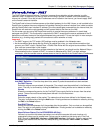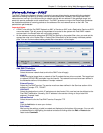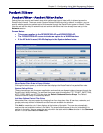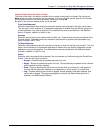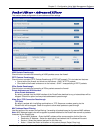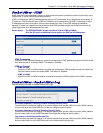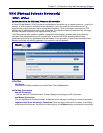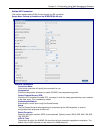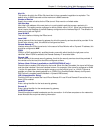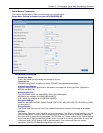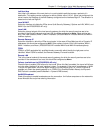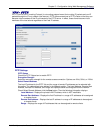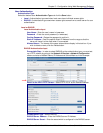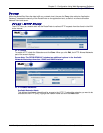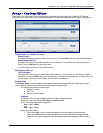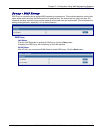
Chapter 5 – Configuration Using Web Management Software
Multi-Tech Systems, Inc. RouteFinder SOHO RF820/RF820-AP & RF830/RF830-AP User Guide (S000399E) 62
VPN > IPSec > Add IKE Connection
Key Life
The duration for which the IPSec SA should last is from successful negotiation to expiration. The
default value is 28800 seconds and the maximum is 86400 seconds.
Number of Retries
Specify the number of retries for the IPSec tunnel. Enter zero for unlimited retries.
Left Next Hop
Next Hop is the address of the next device in a routing table’s path that moves a packet to it’s
destination. This setting can be configured or left as a static value: 0.0.0.0. When not configured, the
value is set to the Gateway of the Box/Gateway configured on the Interface/Right IP. The selection is
based on the Left and Right IP.
Local WAN IP
This is the interface initiating the IPSec tunnel.
Local LAN
Internal subnet of the local security gateway for which the security services should be provided. If the
RouteFinder acts as a host, this should be configured as None.
Remote Gateway IP
Interface where the IPSec tunnel ends. In the case of a Road Warrior with a Dynamic IP address, this
should be configured to ANY.
FQDN
FQDN is a DNS resolvable fully qualified domain name with which identity the right peer can be
identified. When FQDN is selected, the Remote Gateway IP should be blank.
Remote LAN
Internal subnet of the remote security gateway for which the security services should be provided. If
the remote end is the host, this should be configured as None.
Failover (Note: Failover is available on the RF830/RF830-AP only.)
Check the box to enable VPN failover for the tunnel. When this field is enabled, the tunnel will failover
onto the other interface if the local interface is down. For example, if the tunnel is configured on WAN
1 but the link goes down, the tunnel again comes up on the link that is up (i.e., LAN 2). Failover is
possible only when the remote gateway is an FQDN (Fully Qualified Domain Name) and Dynamic
DNS Failover is enabled (see the Network > Dynamic DNS screen).
UID (Unique Identifier String)
Check the UID box to enable the Local ID and Remote ID. Local ID and Remote ID are active only
when UID is enabled.
Local ID
Enter a string identifier for the local security gateway.
Remote ID
Enter a string identifier for the remote security gateway.
NetBIOS Broadcast
Check this option to enable broadcasts over the connection. It will allow computers on the network to
share Microsoft file and printer sharing information.



